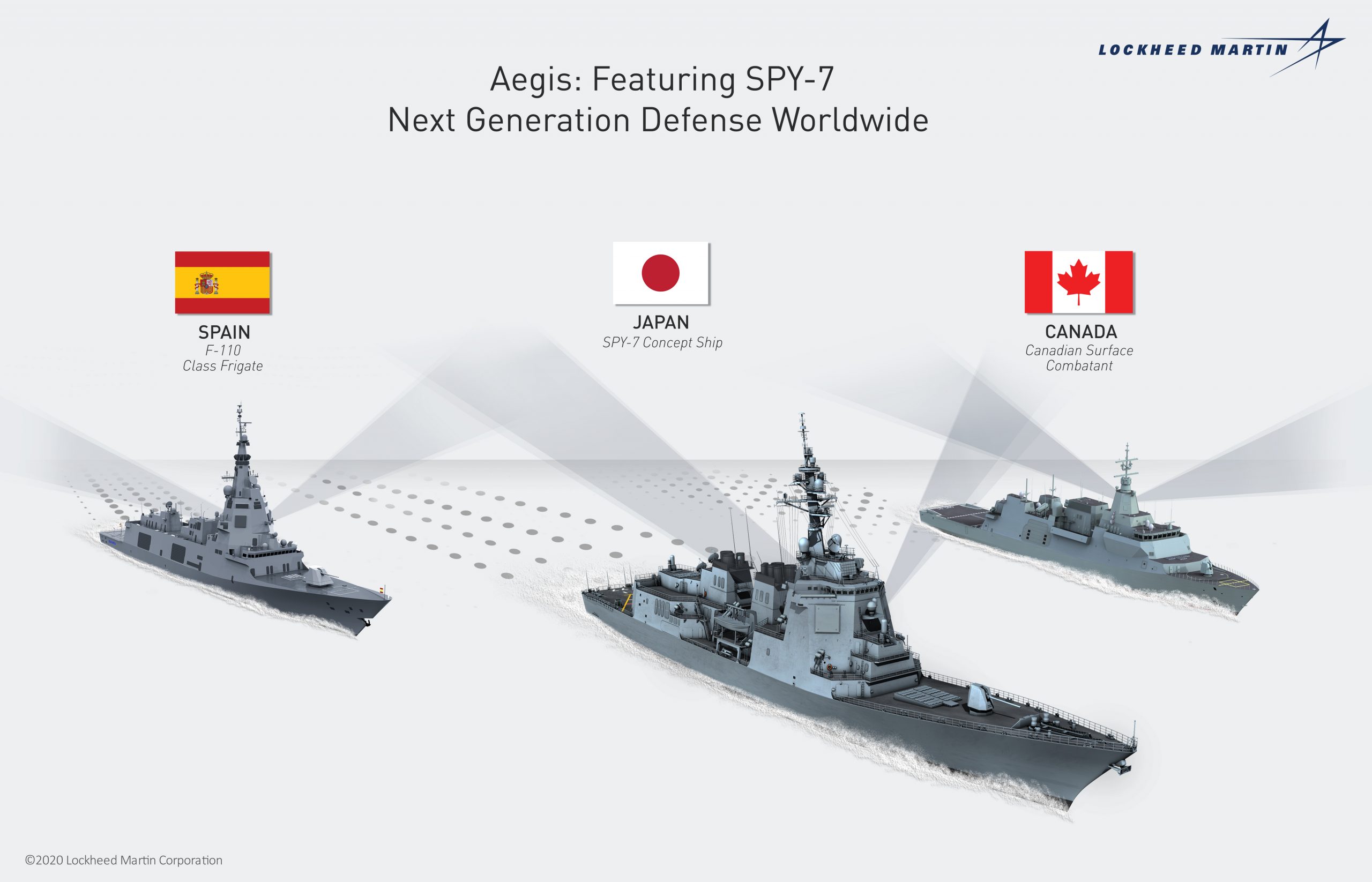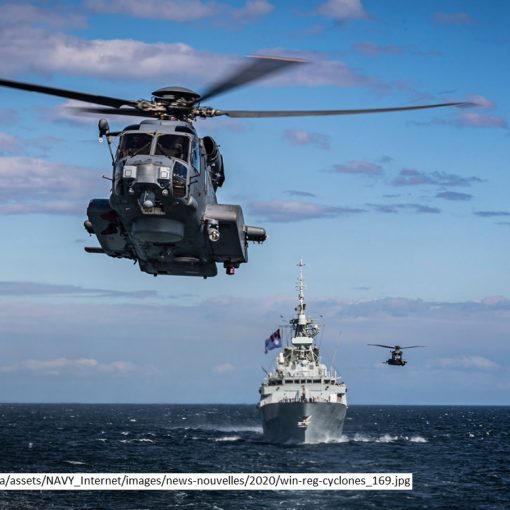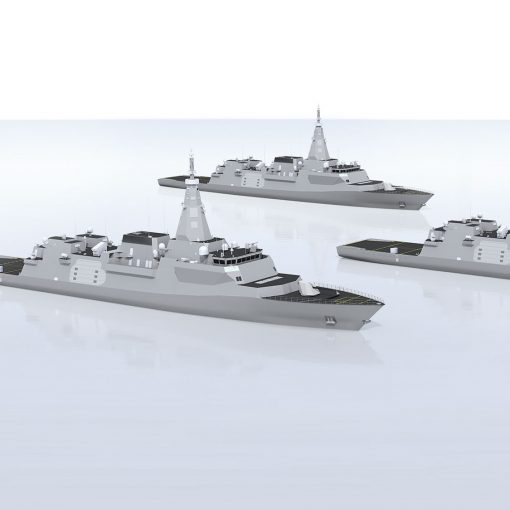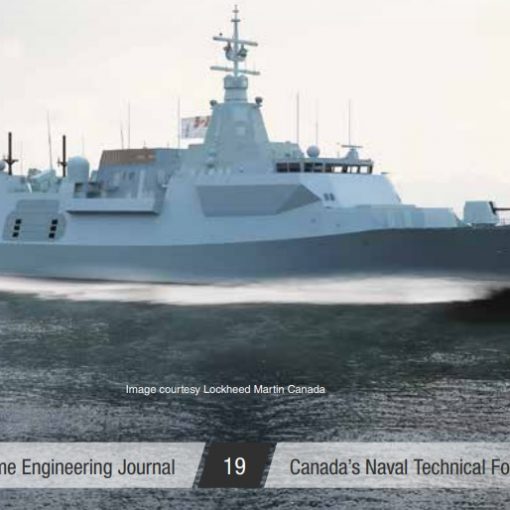Dan Middlemiss, 12 May 2021
The US Defense Security Cooperation Agency (DSCA) on 11 May 2021 announced that it had delivered the required certification notifying Congress of a possible Foreign Military Sale to the Government of Canada of the AEGIS Combat System valued at an estimated $1.7 billion (US).
According to the Letter of Transmittal No. 21-17 the potential sale would cover:
.... four (4) Shipsets of the AEGIS Combat System (ACS); one (1) AEGIS Combat System Computer Program; four (4) Shipsets of AN/SPY-7 Solid State Radar Components; four (4) Shipsets of Cooperative Engagement Capability (CEC); and three (3) Shipsets of the MK 41 Vertical Launch System. Also included is Mode 5/S capable Identification Friend or Foe (IFF) equipment; early ACS development activities for the Canadian Surface Combatant (CSC) Project to include U.S. Government and contractor representative engineering activities supporting design, integration, testing, technical documentation, modeling, and training; hardware to support development and testing in U.S. facilities; software; documentation (including combat system capabilities and limitations); training devices and services; technical support; and other related elements of logistical and program support.” [1]
Earlier in this Forum, David Dunlop posted that Canada was acquiring a similarly limited number of OTO Melara/Leonardo 127mm/64 LW guns for the CSC. [2]
These two slated acquisitions suggest strongly that Ottawa has decided to procure its CSCs in an unstated number of ships initially, most likely a first batch of three warships. This possibility was advanced by both retired Admiral Mark Norman and retired Admiral Ian Mack in separate reports earlier. The UK has adopted a similar approach for its own Type-26 frigate program. In both the Canadian and UK cases, this batch series procurement approach would be designed to limit the initial procurement costs of the frigates, and to spread out the overall program costs over an extended, but as yet undefined, period of time.
Several thoughts come to find. First, in a typical fashion, in its pursuit of an open and transparent procurement process for the CSC, Ottawa has not made any specific comments about these recent developments. Second, this stretching out of the procurement program into one or more series of batches, leaves the possibility that the program could be reviewed by some future government. Third, much like the UK case, there is no guarantee that the CSC program will go forward for the full 15 ships. For instance, the UK has made no firm commitment as to dates for its follow-on five Type 26 frigates. Much the same as the Canadian case, future batches will depend on the government authorizing future funding. Fourth, any extended delays between batches will add considerable costs to the CSC project, a point the Office of the Auditor General has made abundantly clear in several costing reports. Fifth, the announcement of four shipsets of the AN/SPY-7 radar components, raises the question of what exactly will be left for Canadians of the high-tech jobs associated with the development and production of this yet untested radar system. Will LMC be left with some metal-bashing harnesses and other minor sub-systems and components of this radar system? Presumably, LMC will at least be responsible for the final assembly, installation and testing of the radar, but will this really constitute high-value technological additions for Canadian industry?
A more unsettling prospect is that these twin developments may be signaling Ottawa’s return to an old dodge – dividing the procurement project into two separate components, one for the platform itself, and another for the weapons and associated combat systems. Ottawa used this approach for the CF-18 procurement and for the Maritime Helicopter replacement program. In both cases, the government was roundly criticized for attempting to confuse the Canadian public about the real costs of the acquisitions. Each component made little sense to the CAF without the other. But it did help distract from the sticker shock.
We await with interest further developments in the case of the CSC procurement strategy.
Notes:
[1] For the News Release from the US DSCA see, https://www.dsca.mil/press-media/major-arms-sales/canada-aegis-combat-system
[2] David Dunlop, “CSC: Canada buys OTO Melara/Leonardo 127mm/64 LW gun,” Broadsides, 23 April 2021.






4 thoughts on “CSC: Ottawa Opting for a Batch Procurement Approach?”
For what it’s worth, officials from the RCN’s CSC program have confirmed under Chatham House rules in certain Canadian think tank-hosted talks that yes, CSC will be procured in batches to avoid committing to obsolete equipment and providing room for including newer equipment throughout the 15-year build process.
As for Canadian industry, there’s naturally a lot more to the CSC than just the SPY-7 radar: Ultra in Halifax is responsible for the seemingly the entire ASW suite, for example, while LMC is doing the combat management system (CMS 330, without which SPY-7 and Aegis isn’t of much use!). And, as I noted from my CNR Vol 15 No. 3 briefing/tour at LM’s SPY production facility, MDA in Richmond, BC, is on deck to produce the X-band illumination radars that will pair with the SPY-7 (MDA has already been confirmed to do laser warning/countermeasures). Rolls Royce in Ontario, meanwhile, is doing the boat handling and crane system for the mission bay; and JSK Naval Support in Montreal has been contracted for the ships’ torpedo tubes.
So yes, while SPY-7 and Aegis is undoubtedly a big ticket item that’ll be primarily done in American hands, there are a lot of other major components to these ships that have been confirmed or will be confirmed for Canadian companies and workers. Assessing whether the program overall has or has not delivered on its promise of bolstering Canadian industries cannot ignore all these other contracts.
Hi Dan. The operative word in all of this is of course “possible”, as no contract has yet been signed with the Canadian government. One of these four shipsets would most likely be for setup and training at Lockheed Martin’s facility in Dartmouth, N.S. Doing the “batch” thingy for the first three CSC Frigates seems to be a prudent way to go, however, this could also give the government an “out” just in case the costs become too political down the road. I certainly hope not, as Canada needs all of these 15 Frigates just to maintain the tasks and missions required of the RCN to accomplish in the future. Future funding of the remaining batches of CSC Frigates, all of a sudden, seems to be “up-in-the-air”, but more concerning is the possible delay between batches which may leave Canadian industry and Canadian high-tech jobs “out-in-the cold” and makes it very difficult to assess total costs of the entire project. We never seem to learn from our mistakes in the past.
Tim and David,
Good and appropriate replies in both cases.
A couple of other possibilities arise from a batch production of the CSC.
First, through recent announcements, DND has made it clear that the start of both the CF-188 fighter replacement and the CSC projects will now closely overlap. This will put even greater pressure on Cabinet to find and justify the funds for two, very expensive, procurement projects at the same time. I cannot think of a comparable situation in recent memory. As a consequence of the Defence Structure Review in the mid-1970s, Cabinet decided on a carefully sequenced progression of major procurements: first the LRPA, then the NFA, and finally the CPF.
Second, is there any indication or guarantee that these first limited shipsets of major equipment for the CSC will necessarily be for the first batch of warships? I don’t know, but I have talked to certain DND insiders who have suggested that the first CSC batch will be built relatively stripped down – that is, without much of the complex, expensive AEGIS radar and CEC components included. I assume then that DND would hope to upgrade these early ships later on, perhaps in a mid-life refit. But this option would seriously reduce the capabilities of the first CSCs.
Third, a batch production approach has much to commend it inasmuch as DND could then test the effectiveness of the initial equipment, and consider modifications or replacements to keep the ships state-of-the-art.
Fourth, one problem with a batch approach which stretches out the delivery schedule of CSCs, is that it could put an enormous strain on the navy to find sufficient duct-tape to keep our overworked Halifax-class frigates operational. In a sense, these CPFs are already being held together with duct-tape. Internal DND studies reveal that the CPFs, even after their recent life extension and modernization upgrades, are experiencing a shortage of spare parts, and are developing serious corrosion and structural cracking problems. As it currently stands, some of the CPFs are expected to operate into the 2040s, and any further delays in CSC production schedules will make this problem even more acute. I have not found to date any definitive information that DND and the navy have earmarked the necessary funds to operate the CPFs that far into the future.
Worth thinking about.
Dan
Hmmmm…. Me thinks you have four excellent thoughts to ponder. I think I have been so engrossed in the CSC Frigate program that I had forgotten about the F-18 replacement program. This could be a problem for the CSC production plan. We still have no guarantee with the first ship-sets, however I can’t see the RCN not getting the “full-meal-deal”. What am I saying! We still don’t even have a contract yet!! Why would we want to upgrade them later on? It just doesn’t make sense. Your fourth comment really scares me though!! Heaven help the Navy if we have to increase the amount of duct tape needed to keep these CPFs going, however we’ve done that before ie: “We have done so much, with so little, for so long, that now we are ready, to do anything ,with nothing, forever! Keep smilin’!!!